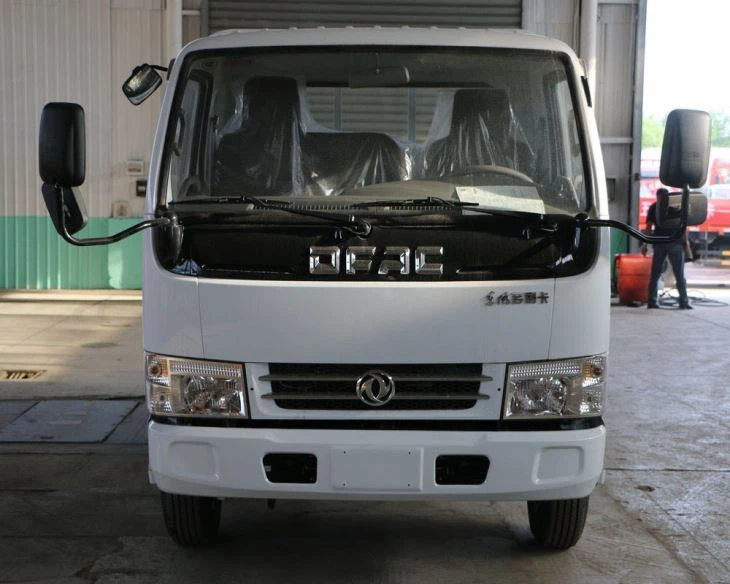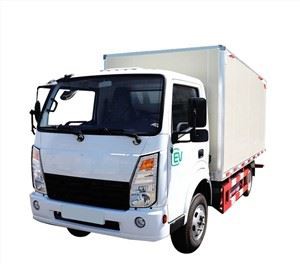Hooklift trucks are specialized vehicles designed for a variety of industries, offering flexibility and efficiency in transporting containers and other loads. These trucks utilize a hook-lift mechanism that allows them to quickly load, transport, and unload various types of containers, providing a level of versatility that is essential in many operations. This article covers everything from the types and components of hooklift trucks to their advantages, applications, and maintenance tips.
Understanding Hooklift Trucks
What is a Hooklift Truck?
A hooklift truck is a commercial vehicle equipped with a hydraulic lift system that employs a hook mechanism to load and unload containers. These trucks can easily switch between different container types, such as dumpsters, flatbeds, and storage boxes, making them invaluable to businesses that require efficient transport and relocation of materials.
History of Hooklift Trucks
The concept of hooklift trucks emerged in the 20th century as industries sought more efficient ways to handle waste and construction materials. Initially popularized in the waste management sector, hooklift trucks have since expanded into various applications due to their adaptability and functional design.
Components of a Hooklift Truck
Key Parts of a Hooklift System

Understanding the main components of a hooklift truck is essential for both operation and maintenance. The primary parts include:
- Chassis: The base frame that supports all components.
- Hook Mechanism: A key feature that attaches to and secures the container during transport.
- Hydraulic System: Facilitates the lifting and lowering of the hook.
- Container: The load carrier which can be swapped based on needs.
- Cab: Where the driver operates the truck, equipped with controls for the hydraulic system.
Types of Hooklift Trucks
Hooklift trucks come in various configurations suitable for different applications. The most common types include:
| Type | Description | Common Uses |
|---|---|---|
| Single Axle Hooklift | Lightweight and easy to maneuver. | Residential waste collection, small construction sites. |
| Tandem Axle Hooklift | Offers increased stability and load capacity. | Commercial waste management, larger construction projects. |
| Multi-Axle Hooklift | Designed for heavy loads and extended trips. | Industrial applications, transportation of heavy machinery. |
Advantages of Hooklift Trucks
Why Choose a Hooklift Truck?
Hooklift trucks provide several notable advantages:
- Versatility: Easily switch between different containers for varying loads.
- Efficiency: Quickly load and unload; reduces downtime.
- Cost-Effective: Can replace several vehicles in one, lowering overall operational costs.
- Space-Saving: Containers can be stored off-site, simplifying site operations.
Operational Efficiency
The design of hooklift trucks streamlines loading and unloading processes. For example, a hooklift truck can pick up a dumpster at a construction site and replace it with an empty container in just a few minutes, allowing for continuous work flow.
Applications of Hooklift Trucks

Industries That Utilize Hooklift Trucks
Hooklift trucks are used in various industries. Key applications include:
- Waste Management: Ideal for collecting and transporting refuse and recycling containers.
- Construction: Efficient in moving materials like gravel, sand, and debris.
- Landscaping: Perfect for transporting soil, plants, and tools.
- Municipal Services: Used by cities for snow removal and maintenance.
- Event Management: Transporting waste containers during festivals and large gatherings.
Buying a Hooklift Truck
What to Consider When Purchasing
When looking to buy a hooklift truck, several factors should be considered:
- Load Capacity: Determine the maximum weight you will need to transport.
- Hooklift System Type: Choose a single, tandem, or multi-axle system based on your operational needs.
- Vehicle Maintenance: Consider the reliability and availability of service for the vehicle.
- Budget: Establish a clear budget including purchase price, maintenance, and operating costs.
New vs. Used Hooklift Trucks
Deciding between new and used hooklift trucks involves assessing your budget and operational needs. A new truck guarantees up-to-date features and warranty, while used trucks may offer significant savings but could require immediate maintenance.
Maintenance Tips for Hooklift Trucks
Keeping Your Truck in Top Shape
Regular maintenance is crucial for the longevity and functionality of hooklift trucks. Key maintenance tips include:

- Hydraulic System Checks: Regularly inspect hydraulic lines for leaks and ensure fluid levels are adequate.
- Tire Maintenance: Monitor tire pressure and tread depth to ensure safe operation.
- Regular Inspections: Schedule routine checks by qualified mechanics to identify potential issues early.
- Cleaning: Keep the truck and containers clean to prevent corrosion and damage.
Practical Examples of Hooklift Truck Usage
Case Study: Construction Site Operations
At a mid-sized construction site, a hooklift truck is deployed to handle multiple types of containers. Initially, it loads a dumpster for waste removal. After clearing space, it switches to a flatbed to transport building materials, illustrating the truck’s versatility.
Tips for Efficient Use
To maximize the effectiveness of a hooklift truck, consider these tips:
- Train operators on best practices for loading and unloading.
- Schedule regular maintenance to avoid unexpected breakdowns.
- Keep compatible containers readily available to minimize switching time.
Frequently Asked Questions
What is the load capacity of a typical hooklift truck?
The load capacity varies, but most hooklift trucks can handle between 10,000 to 40,000 pounds depending on the configuration.
How long do hooklift trucks typically last?
With proper maintenance, hooklift trucks can last 10 to 15 years or longer, depending on usage and care.
Can hooklift trucks operate in all weather conditions?
Yes, hooklift trucks are designed for various weather conditions, but operator caution is advised in extreme situations.
Are hooklift trucks fuel-efficient?
Many modern hooklift trucks are designed to be fuel-efficient, though fuel economy will ultimately depend on load and driving conditions.
What types of containers can be used with a hooklift truck?
A hooklift truck can use various containers including dumpsters, flatbeds, bulk containers, and more, adaptable to specific needs.
Do I need a special license to operate a hooklift truck?
Operators typically need a commercial driver’s license (CDL) and should check for any additional requirements based on local regulations.